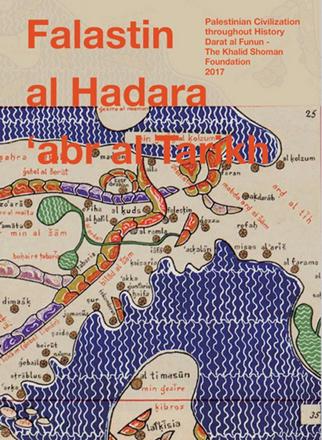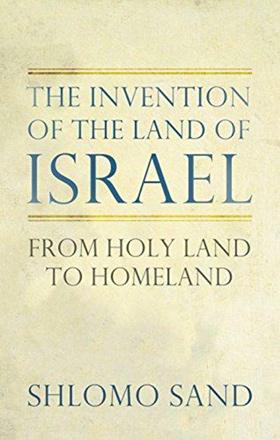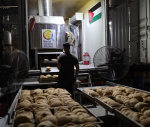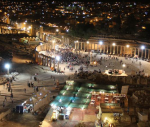You are here
Inspiring memories that live on
By Sally Bland - Feb 09,2020 - Last updated at Feb 09,2020
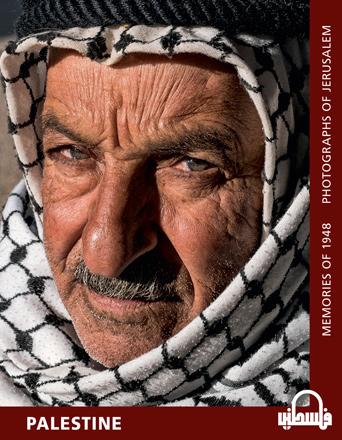
Palestine: Memories of 1948, Photographs of Jerusalem
Chris Conti and Altair Alcantara
Translated from French by Isabelle Lavigne
London: Hesperus Press, 2019
Pp. 235
This book is a beautiful example of how individual identities can coalesce into a collective whole. It is also fascinating to read. It could serve as an introduction to the Palestinian cause, but equally those with much knowledge of the subject will find something of interest. Careful footnotes are explanatory as well as an invitation to learn more. The text consists of interviews with older Palestinians, first-person accounts of the 1948 Nakba and its aftermath, illustrated with black-and-white photos of the interviewees and historical Palestine. The book concludes with 28 pages of stunning, contemporary photos of Jerusalem and its inhabitants, from the iconic Dome of the Rock to children at play. Despite the tragic nature of the subject matter, the overall tone of the book is upbeat and forward-looking by virtue of the strength of character exhibited by the interviewees and the photos’ beauty.
Nineteen Palestinians, eight women and eleven men, some living under occupation, others in exile, and two remaining in Israel, tell the story of what happened to them, their families and home in 1948. As Salim Tamari points out in the foreword, a few are “prominent figures like Latin Patriarch Michel Sabbagh, writer Feissal Darraj, and advocate Fuad Shehadeh — but the majority are ordinary Palestinians who originally came from Jerusalem or made the city the centre of their lives”. (p. 9)
Without disputing Tamari’s identifying the majority of interviewees as ordinary people, one is struck by how very extraordinary they were, how courageous in the face of unimaginable adversity. Among the historical memories, there are many references to the Deir Yasin massacre and also an account of the even larger one perpetrated at Dawayima. Many interviewees pay tribute to Abd Al Qadir Al Husseini, a leader of the 1936 revolt who was martyred in the resistance of 1948. Many also mention good relations and friendships with Jewish neighbours in Palestine, but in almost all cases these ended abruptly with Zionism’s conquest and the declaration of the Israeli state. Equally prominent are descriptions of the Palestinian way of life, both rural and urban, before it was so cruelly disrupted in 1948.
However, these oral histories are not stuck in the past. Not only did the interviewees survive; despite threats to their very existence, they rose to the challenge of preserving their identity, raising families, getting an advanced education and in some cases continuing to till their land and tend their olive trees, tirelessly protesting all Israeli encroachments, even knowing they could expect no redress. This resilience and steadfastness led Falastini Naili, Ifpo researcher, to title her introduction to the book “Living Memories”, wherein she highlights the persistence of refugees in continuing to assert their right of return. “The 19 stories offered here illustrate different ways of being present, of counting, of making oneself heard and of having some weight. In the face of erasure — imposed through terror… they retrace the effects of this historical cataclysm and the different strategies for survival, perseverance, creativity and resistance that they deployed.” (p. 12)
The narratives display great diversity, representative of different sectors of Palestinian society. There are Christians, Muslims and Sufis. There are farmers, homemakers, activists, community leaders, professionals, businessmen and women, teachers, writers, intellectuals and one woman who achieved high positions in banking and government. Some managed to remain in Palestine; others moved between Jordan, Syria, Lebanon and Egypt; some as far away as Brazil and Chile, each time reinventing their life. There is also variation in their narratives’ focus. Some add important details to the historical narrative. Others explore the psychological effects of being a refugee. Several confide telling anecdotes, revealing the irony of their situation, small victories they achieved along the way, or how, occasionally, luck intervened to Palestinian advantage. One is especially struck by the women’s stories which demonstrate a high degree of independence, initiative and mobility, which sometimes brought them to leadership positions and contributed greatly to collective resistance.
Despite this diversity, there are common themes and apparent agreement on a set of core values—the importance of family, heritage and education, and willingness to make great sacrifices in the struggle for justice.
Publication of this book, which gives unmediated voice to Palestinians of the Nakba generation, is particularly timely on two counts. One, that generation with first-hand memories will not always be among us. Two, at a time when totally self-serving efforts are being exerted to extinguish the Palestinian cause without the Palestinians themselves having even been consulted, it is ever more essential that their voices be heard — an imperative recognised by author Chris Conti who writes, “In this book we have tried to be as unobtrusive as possible and give centre stage to the victims, the Palestinians.” (p. 17)
Only in the case of Majed Abu Sharar, poet, progressive intellectual and political leader, is a person’s story reconstructed from the memory of family and friends, for he was assassinated in 1981. Everyone else speaks for themselves.
“Palestine: Memories of 1948” is available at the Jordan Book Centre. On Wednesday, February 12, at 7pm, there will be a book launch at Dar Al Anda in Jabal Luweibdeh.
Related Articles
Palestinians in Syria: Nakba Memories of Shattered CommunitiesAnaheed Al HardanNew York: Columbia University Press, 2016Pp.
Falastin Al Hadara ‘abr Al Tarikh — Palestinian Civilisation throughout HistoryTranslated from the Arabic by Joud Halawani Al TamimiAmman: T
The Invention of the Land of Israel: From Holy Land to HomelandShlomo SandLondon: Verso, 2014Pp.



